Filter by
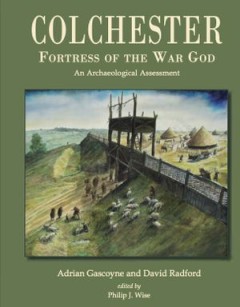
Colchester, Fortress of the War God An Archaeological Assessment
This volume is a critical assessment of the current state of archaeological knowledge of the settlement originally called Camulodunon and now known as Colchester. The town has been the subject of antiquarian interest since the late 16th century and the first modern archaeological excavations occurred in 1845 close to Colchester Castle, the towns most prominent historic site.The earliest signifi…
- Edition
- -
- ISBN/ISSN
- 9781789258929
- Collation
- -
- Series Title
- -
- Call Number
- -
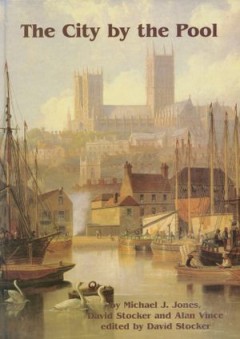
The City by the Pool Assessing the Archaeology of the City of Lincoln
This volume offers a new and up-to-date synthesis of Lincoln's long history as a major city and regional capital, from prehistory to 1945. The 'City by the Pool' was a major religious centre long before the Roman invasion and from bronze-age shamans to early Baptists people have always been attracted here for spiritual as well as mundane purposes. The authors argue for the presence of a major r…
- Edition
- -
- ISBN/ISSN
- 9781789254389
- Collation
- -
- Series Title
- -
- Call Number
- -
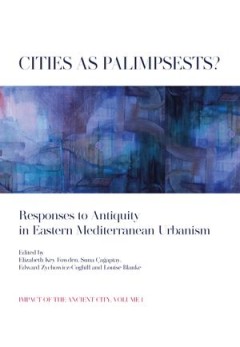
Cities as Palimpsests? Responses to Antiquity in Eastern Mediterranean Urbanism
The metaphor of the palimpsest has been increasingly invoked to conceptualize cities with deep, living pasts. This volume seeks to think through, and beyond, the logic of the palimpsest, asking whether this fashionable trope slyly forces us to see contradiction where local inhabitants saw (and see) none, to impose distinctions that satisfy our own assumptions about historical periodization and …
- Edition
- -
- ISBN/ISSN
- 9781789257700
- Collation
- -
- Series Title
- -
- Call Number
- -
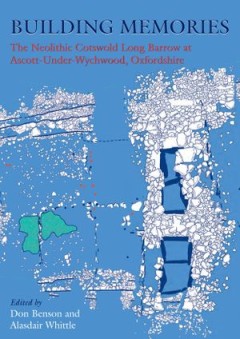
Building Memories The Neolithic Cotswold Long Barrow at Ascott-under-Wychwoo…
It is just over forty years since the start of the excavations of the Ascott-under-Wychwood long barrow (1965-69) under the direction of Don Benson. The excavations belonged to the latter part of a great period of barrow digging in southern Britain, which was ending just as, by striking contrast, intensified investigation and fieldwork at causewayed enclosures were beginning. Although a long ga…
- Edition
- -
- ISBN/ISSN
- -
- Collation
- -
- Series Title
- -
- Call Number
- -

Bristol: An Archaeological Assessment A Worshipful Town and Famous City
Bristol is a major city and port in the south-west of England. In medieval times, it became the third largest city in the kingdom, behind London and York. Bristol was founded in the late Saxon period and grew rapidly in the 12th and 13th centuries. Initially, seaborne trading links with Ireland and France were particularly significant; later, from the 16th century onwards, the city became a foc…
- Edition
- -
- ISBN/ISSN
- 9781789258912
- Collation
- -
- Series Title
- -
- Call Number
- -
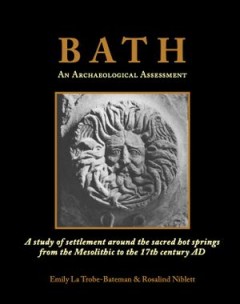
Bath: An Archaeological Assessment A study of settlement around the sacred h…
For centuries, the remains of the great Roman-British bathing and temple complex in the center of Bath have attracted the interest and imagination of countless visitors to the city. But there is more to the archaeology of Bath than its Roman monuments. Human settlement here has spanned ten millennia, dating back to the final retreat of the ice sheets from Britain at the close of the last Ice Ag…
- Edition
- -
- ISBN/ISSN
- -
- Collation
- -
- Series Title
- -
- Call Number
- -
Ariconium, Herefordshire An Iron Age settlement and Romano-British 'small town'
The Roman 'small town' of Ariconium in southern Herefordshire has long been known as an important iron production center but has remained very poorly understood. The town is suggested to have developed from a late Iron Age Dobunnic tribal center, which owed its evident status and wide range of contacts to control of the production and distribution of Forest of Dean iron. Rapid expansion during …
- Edition
- -
- ISBN/ISSN
- 9781842179352
- Collation
- -
- Series Title
- -
- Call Number
- -
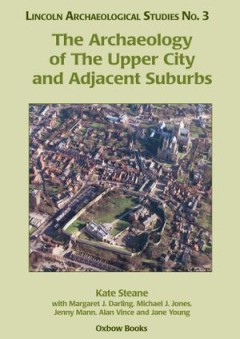
The Archaeology of The Upper City and Adjacent Suburbs
This volume contains reports on sites excavated in the upper walled city at Lincoln and adjacent suburbs between 1972 and 1987. The project included large-scale excavations which yielded some stunning finds and revealed considerable information about several periods of the city's history. Each site is described in turn, incorporating stratigraphic, artifactual and environmental information, and…
- Edition
- -
- ISBN/ISSN
- 9781782979043
- Collation
- -
- Series Title
- -
- Call Number
- -
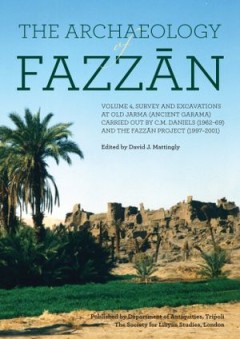
The Archaeology of Fazzan, Volume 4 Survey and Excavations at Old Jarma (Anc…
This is the concluding volume of the Archaeology of Fazzān series, bringing to press the combined results of two Anglo-Libyan projects in southern Libya: the pioneering work of Charles Daniels between 1958 and 1977 and the Fazzān Project directed by David Mattingly between 1997 and 2001. The investigations carried out by these two projects allow an entirely new reconstruction and understandin…
- Edition
- -
- ISBN/ISSN
- 9781914268076
- Collation
- -
- Series Title
- -
- Call Number
- -
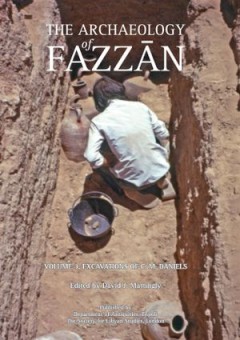
The Archaeology of Fazzan, Volume 3 Excavations of C. M. Daniels
The Archaeology of Fazzan is a major series of reports on the archaeology and history of Libya’s south-west desert region. This volume contains reports and analysis on a series of excavations carried out between 1958 and 1977 by the British archaeologist Charles Daniels, lavishly illustrated by site plans and numerous colour photographs – particularly of the rich artefact assemblages recove…
- Edition
- -
- ISBN/ISSN
- 9781914268069
- Collation
- -
- Series Title
- -
- Call Number
- -
 Computer Science, Information & General Works
Computer Science, Information & General Works  Philosophy & Psychology
Philosophy & Psychology  Religion
Religion  Social Sciences
Social Sciences  Language
Language  Pure Science
Pure Science  Applied Sciences
Applied Sciences  Art & Recreation
Art & Recreation  Literature
Literature  History & Geography
History & Geography